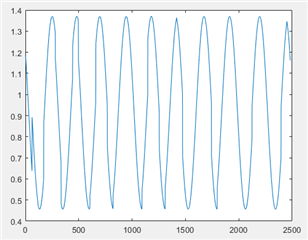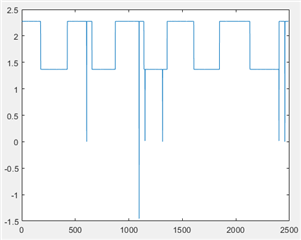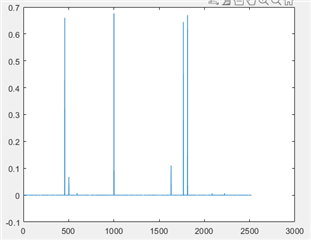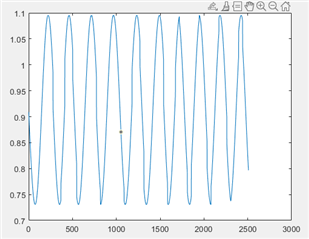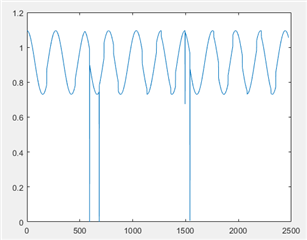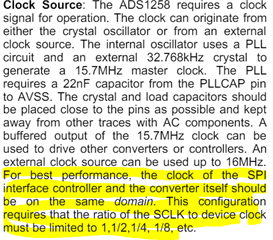Tool/software:
Hello,
I'm using the ADS1258EVM with a sparkfun ESP32 Thing microcontroller to communicate between the PC and the ADC. I am controlling the ADC (sending commands, initializing) using MATLAB. I connected an AWG to one channel and measured the output but I'm seeing some issues: (1) Channel 0 glitches (Fig1) and (2) distortion. I input a sine wave with F = 10Hz, Vcm = 1V, Amplitude = 500mV. The Vcm and the amplitude is close to the input. I converted the codes to voltage by (Vswing/2^24)*code, where Vswing = 5V. I moved the same signal to channel 7 and I don't see any glitches (Fig2). I tried a square wave input to channel 0 and I still see glitches (Fig3). Maybe you have an idea what causes the glitches in channel 0. I have two EVM boards and they both behave the same. I'm using all 8 differential channels and I shorted to GND the unused channels. I even shorted Ch0 to GND but still I see some glitches (Fig4)
I also wanted to ask what could be a reason of occasional overflow in the ADC? Bit status 6 (overflow) and 5 (supply) goes high sometimes (example: 17 out of 20000 samples) but I'm keeping my input within the 5V range. I'm also using an external CLK and not the crystal. I still see some distortion on my sampled data even though it is just 10Hz sine wave signal (Figs. 5 and 6). I think it is caused by this overflow that I miss some samples.
Regards,
Patrice
Fig.1: Ch0 Sine wave
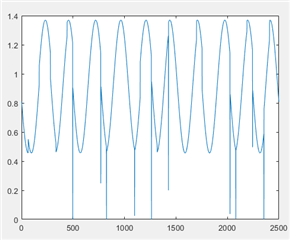
Fig.2: Ch7 Sine wave
